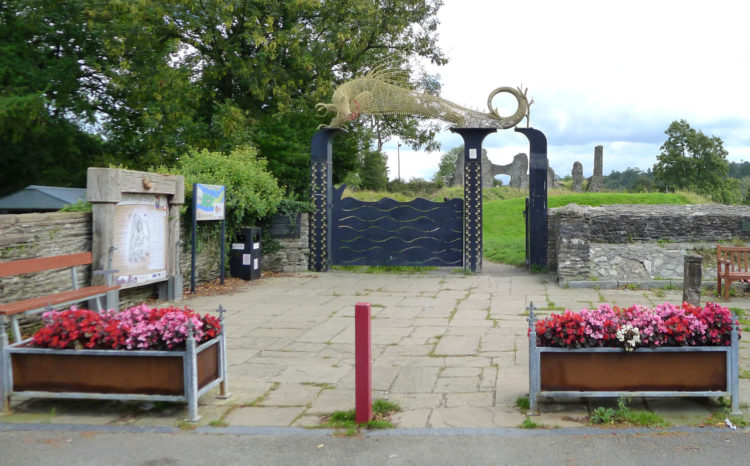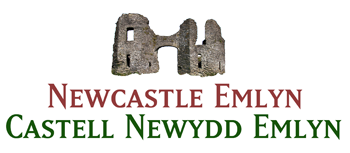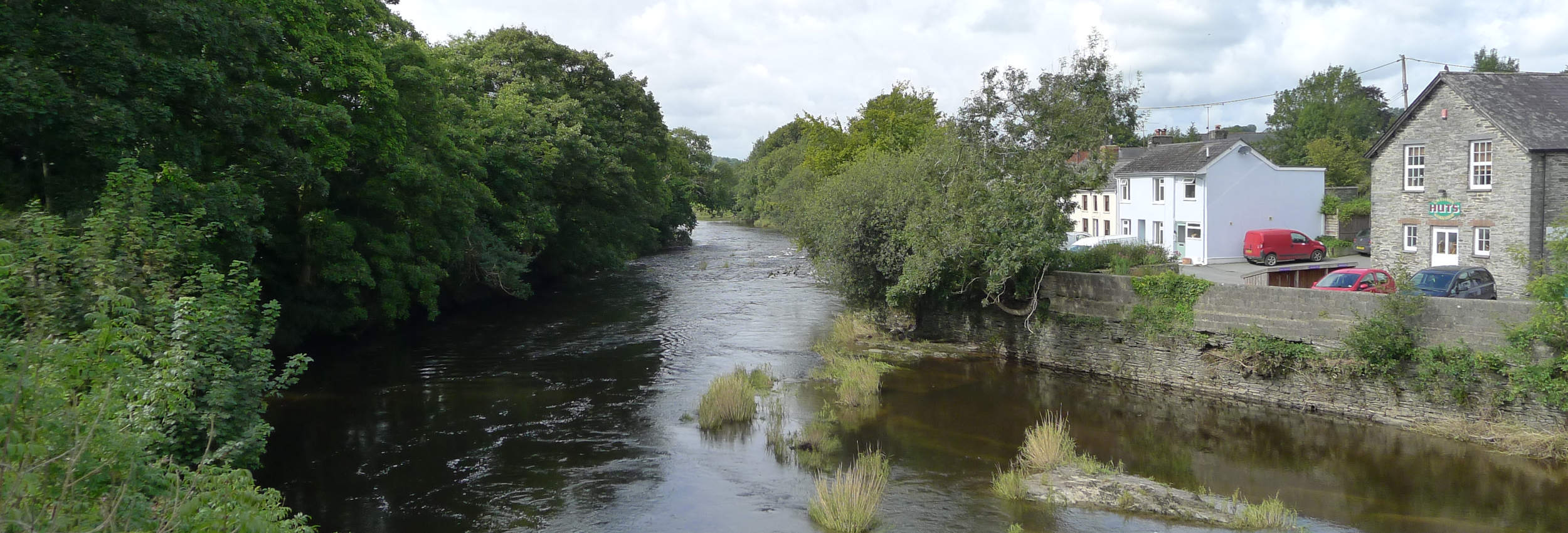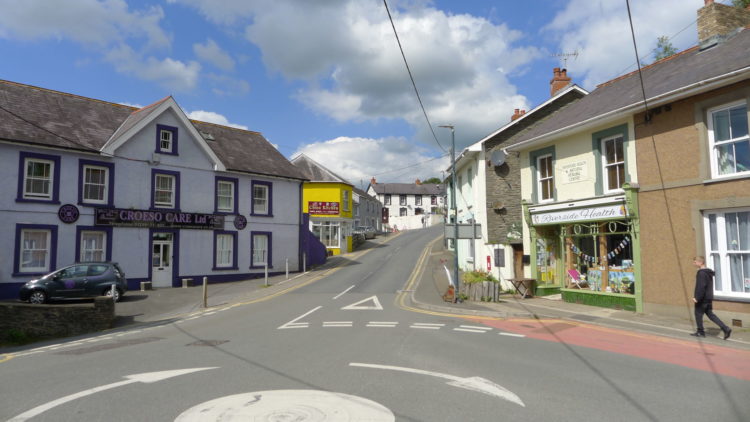History
You can explore Newcastle Emlyn’s history using our Heritage Trail App or explore the town in a fun way using the Newcastle Emlyn Audio Treasure Trail. The History Society also has a Facebook page
Newcastle Emlyn takes its name from the cantref of Emlyn which was an administrative district in Medieval Dyfed. The cantref was made part of the Norman March in the 12th century.
Adpar is the part of the town that lies on the Ceredigion side of the River Teifi. It was formerly called Trefhedyn and was an ancient Welsh borough in its own right.
Newcastle Emlyn grew up around a crossing point over the Teifi, where its swooping meanders made the site a natural defensive position.
Founded around 1240 by the Welsh Prince, Maredudd ap Rhys, Newcastle Emlyn castle is unique in that very few Welsh-built stone castles can be found in West Wales. Following a series of attacks and refurbishments over the following centuries, the castle was finally blown up with gunpowder in 1645 during the English Civil war.
Today visitors can walk amongst the ruins of the walls and gatehouse that still remain.
The dragon gates at the castle are inspired by the legend which tells that the last Dragon in Wales was killed there. During a town fair when the town was full of people, a Wyvern (a fierce winged creature) breathing fire and smoke landed on the castle walls and settled down to sleep. Its appearance on the castle at first brought terror to all but, after the fear had died down, a few brave townsfolk sought to destroy the fearsome monster. A soldier approached the dragon from the river Teifi and floated a red cloak in the river. The dragon awoke, saw the cloak and went to attack it but was shot at by the soldier. The wyvern, in its death throes, floated down the river. The legend tells of the great joy of the townsfolk when they saw the monster dead. Today, the legend of the last dragon In Wales is kept alive in the sculptures and plaques that sit within the dramatic castle ruins.

In the 18th and 19th centuries the river crossing and market (which continues to this day) made Newcastle Emlyn an important drover’s town for many years and left a legacy of Public Houses. As the collecting point for hogs and hardy Welsh cattle, Newcastle Emlyn was a strategic point for drovers taking animals from West Wales to markets in England.
Newcastle Emlyn had a number of historic firsts – the first printing press in Wales in 1719, an electricity generating power station in 1907. A historic last too – the Last Duel in Ceredigion took place in 1814! Historic buildings include the old Court House 1868; The old Grammar School 1867; Bunch of Grapes Grad2 mid 1600s.
The old workhouse is now unrecognisable as a cheese factory, but the old Grammar School building and Court House still stand.
The Neuadd Cawdor Hall with its ornate clock tower is a notable building with the library, tourist information leaflets and public toilets. There are several listed buildings in and around the main street.
Newcastle Emlyn History Group at Hanes Emlyn is situated within Neuadd Cawdor Hall and hosts an excellent collection of artefacts, photos and memorabilia exhibiting local history. You can further explore Newcastle Emlyn’s history and architecture using the Newcastle Emlyn Heritage Trail App.
Newcastle Emlyn is twinned with a similar sized town, Plonevez Porzay in Brittany, France, the partnership being established in 1990.



